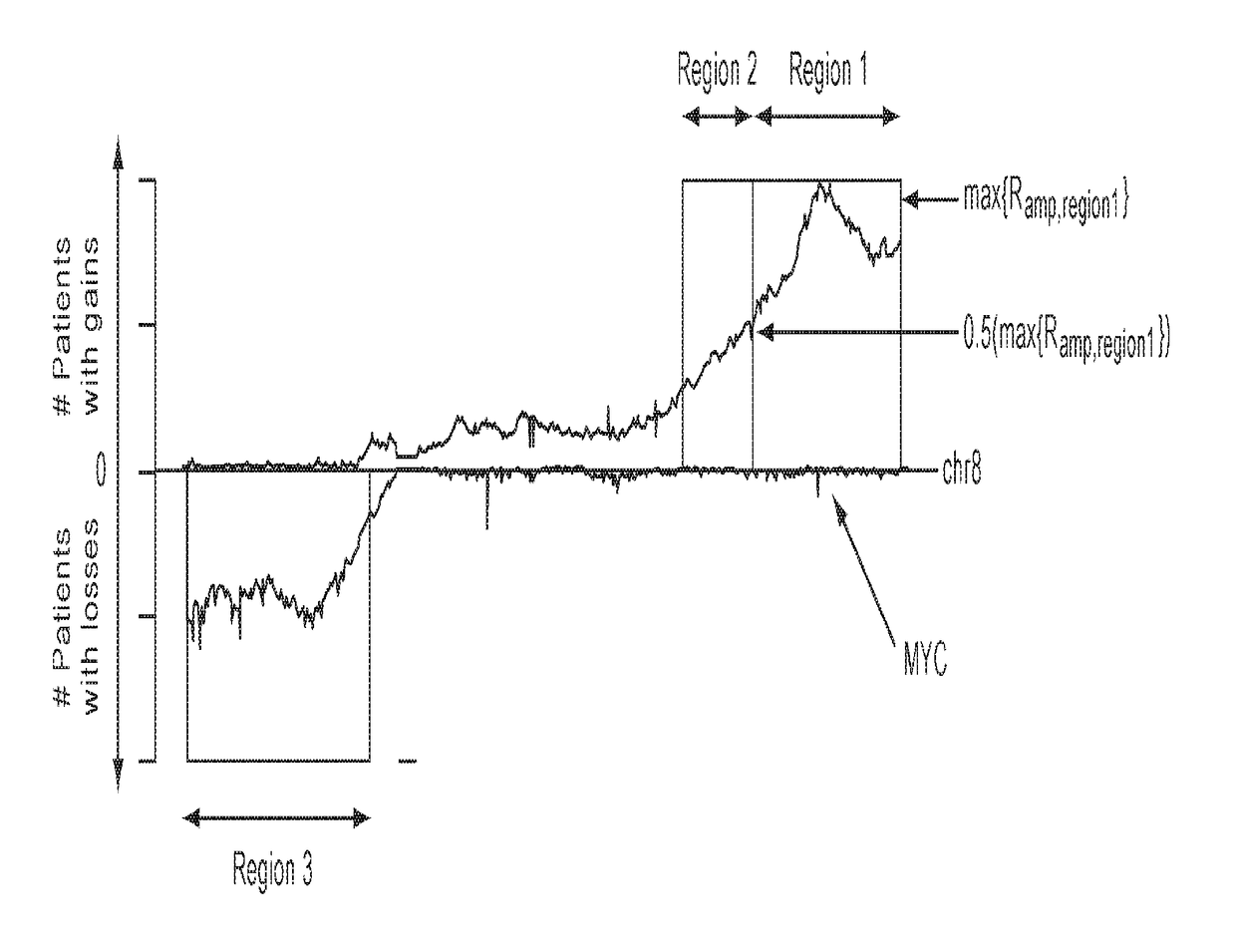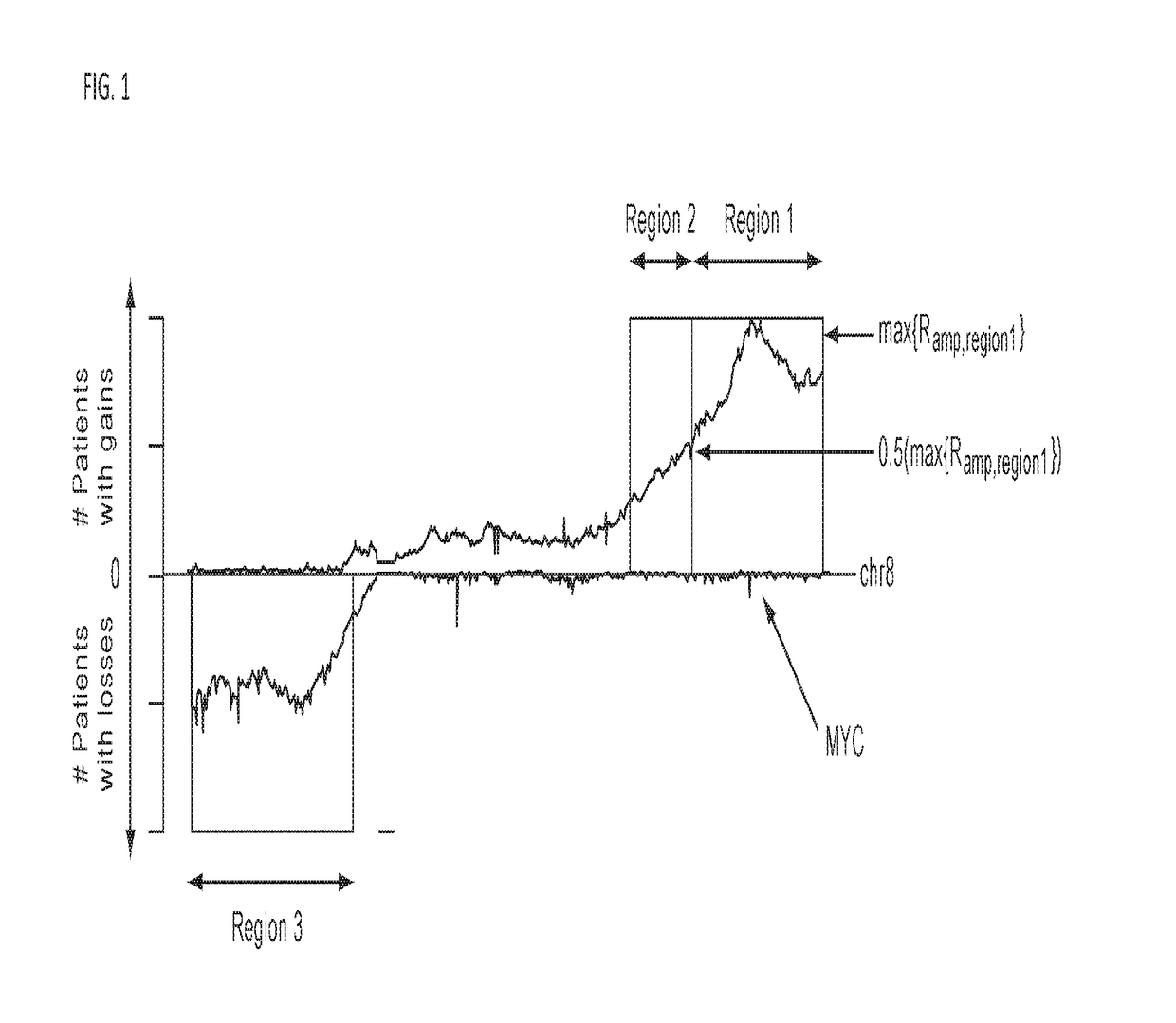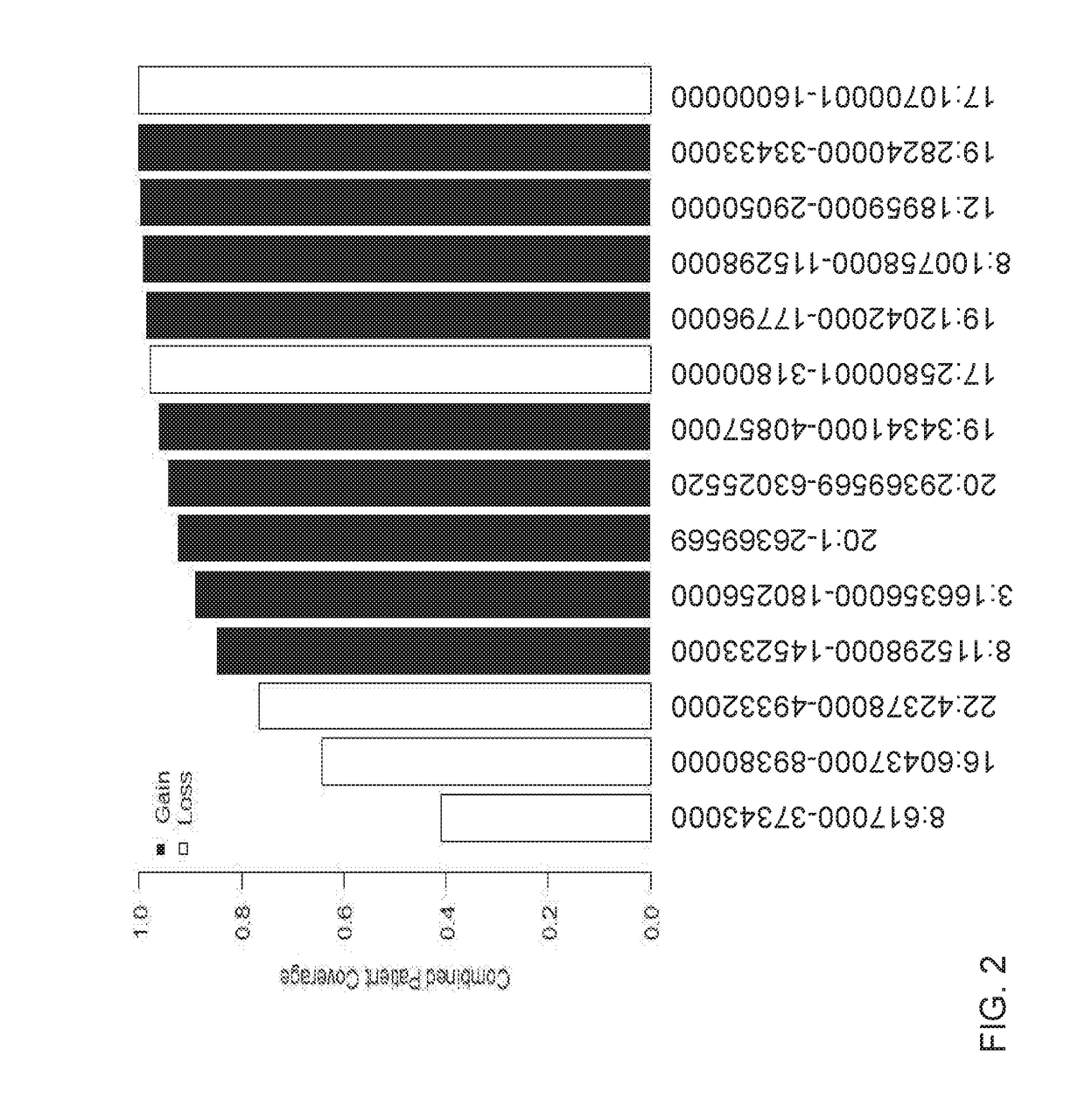Methods and compositions for determining ploidy
a genetic analysis and ploidy technology, applied in biochemistry apparatus and processes, instruments, ict adaptation, etc., can solve the problems of increased risk of infection, hair loss, ulcers in mucous membranes, and low blood cell counts, and achieve the effects of reducing the risk of infection, and reducing the detection difficulty
- Summary
- Abstract
- Description
- Claims
- Application Information
AI Technical Summary
Benefits of technology
Problems solved by technology
Method used
Image
Examples
example 1
of Primer Pool for Ovarian Cancer Polymorphic Loci within Haploblocks
[0379]This example illustrates a method for identifying haploblocks within target chromosomal regions for detecting CNV in ovarian cancer, identifying target polymorphic loci within those segments, and selecting a pool of primers for amplifying nucleic acids including those target polymorphic loci. to the pool of primers allow the determination of allele frequencies at those polymorphic loci in experiments provided in other Examples herein. Accordingly, in this example, Ovarian cancer chromosome regions of interest were identified, haploblocks were identified, candidate SNPs were selected, and pools of primers were designed for amplifying the candidate SNPs.
Primer Pool Design.
[0380]The design process consists of these main steps:[0381]a. Select candidate target SNPs for each region of interest.[0382]b. Attempt to design up to five sets of right and left specific primers for each candidate target SNP.[0383]c. Filter...
example 2
[0401]In this in silico experiment the accuracy of the informatics haplotyping was determined. To estimate haplotypes, the tool ShapeIt was used (available at the hypertext transfer protocol secure site at mathgen.stats.ox.ac.uk / genetics_software / shapeit / shapeit.html). ShapeIt takes as input a list of genotypes along with haplotyping likelihoods based on SNP loci locations and population cross-over data, and outputs estimated haplotypes for the inputted genotypes. It estimates haplotypes for each chromosome separately.
[0402]The 1000 genomes project has existing high confidence genotype calls for many individuals publicly available. The entirety of this high quality genotype dataset was used as a test dataset for the haplotyping validation. Similarly, the 1000 genomes project has available high quality haplotyping information for each dataset. The 1000 genomes haplotyping data can be used as a best guess truth dataset for comparison.
[0403]Comparing haplotypes estimated by ShapeIt to ...
example 3
[0406]In this in silico experiment, it was observed that by analyzing polymorphic data as if the polymorphic loci were within haploblocks, allelic imbalance was detected at similar rates to calculations using perfect haplotype data, in samples down to allelic imbalances of 1%, provided that a sufficient number of polymorphic loci per target chromosome region were analyzed that were within haploblocks having a minimum number of polymorphic loci per haploblock. Two artificial titration experiments using breast cancer cell lines (HCC1954 and HCC2218) were performed to evaluate the performance of the CNV calling algorithm in plasma samples. More specifically, titrations were prepared from pairs of matched tumor and normal cell line samples and having CNVs on chromosome 1 or chromosome 2.
[0407]Cell line HCC1954 was evaluated for chromosome 1, and cell line HCC2218 was evaluated for chromosome 2. For each chromosome, 1248 SNPs were analyzed.
[0408]We assigned certain numbers of consecutive...
PUM
| Property | Measurement | Unit |
|---|---|---|
| temperature | aaaaa | aaaaa |
| temperature | aaaaa | aaaaa |
| Tm | aaaaa | aaaaa |
Abstract
Description
Claims
Application Information
 Login to View More
Login to View More - R&D
- Intellectual Property
- Life Sciences
- Materials
- Tech Scout
- Unparalleled Data Quality
- Higher Quality Content
- 60% Fewer Hallucinations
Browse by: Latest US Patents, China's latest patents, Technical Efficacy Thesaurus, Application Domain, Technology Topic, Popular Technical Reports.
© 2025 PatSnap. All rights reserved.Legal|Privacy policy|Modern Slavery Act Transparency Statement|Sitemap|About US| Contact US: help@patsnap.com



